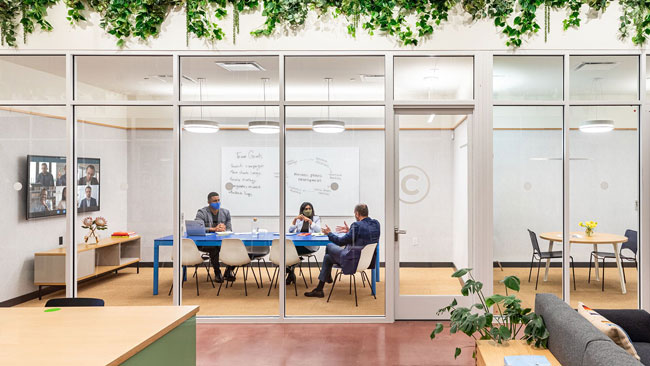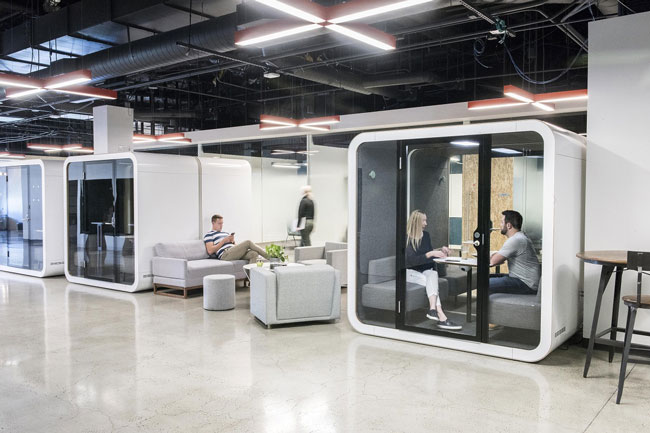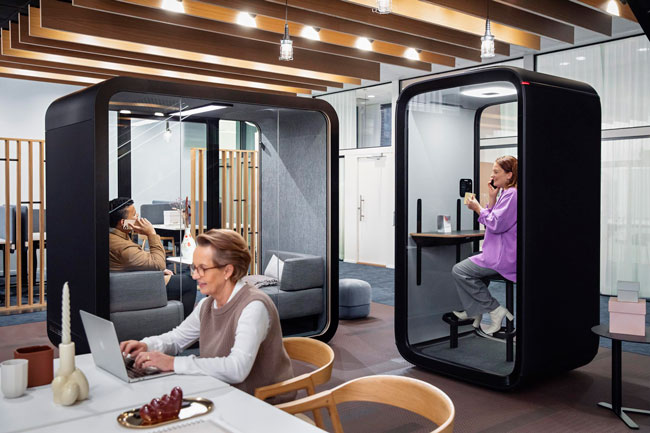KPMG surveyed senior decision-makers from Australia’s largest commercial tenants and leading commercial landlords to understand their considerations on their post-COVID-19 real estate plans, the future of work, and the role the physical office will play in that.

No one-size fits all workplace
The workplace will evolve over the next five years; but there is no one-size-fits-all approach.
Prior to COVID-19, Australian businesses already had some flexible workplace solutions in place, with almost 50 percent of their workforce incorporating some degree of remote working into their week. Since the COVID-19 shutdowns, 50 percent of companies think that over the next five years that the middle and back office roles will be working remotely 51-80 percent of the time. Unsurprisingly, 73 percent are now accelerating their work from home strategies.
For our respondents, 92 percent are expecting a moderate to significant change in their future of work strategies over the next five years. These changes include a shift towards a hybrid work week where employees spend part of the week in the office and the other part working remotely.
This increase in remote working will naturally impact how much office space businesses will require. We found that 58 percent of respondents were expecting to decrease their need for CBD office space in the next five years, and 50 percent believed they would keep their non-CBD office space the same.
Yet, across the different facets of future work strategies, organisations are yet to decide what it might look like. There are disparate views on whether or not they will increase on-shoring activities (17 percent), unsure (41 percent) or leave off-shore (42 percent).
Tenants will favour hybrid workplaces
Hybrid workplace models that mix remote working with CBD headquarters will be increasingly favoured by tenants.
Hybrid models that combine remote working with some form of hub and spoke model (CBD headquarters and smaller offices in local and regional areas) will be increasingly favoured over the next five years with 83 percent of all respondents saying they will move to this type of model in the next two years.
Organisations who took part in this research believe that this type of workplace approach is favoured by their workforce, with the vast majority feeling the under 50 demographic within their workforce will in the future prefer a hybrid model (100 percent felt this would be favoured by those aged under 40 years, and 92 percent felt this would be favoured by those aged 40-49 years).
Flexibility will be key
Flexibility will underpin hybrid workplaces of the future – shaping both the employee experience and the tenant/landlord relationship.

For 91 percent of our respondents, the employee experience/value proposition is the key driver for them to re-evaluate their future of work strategy, and 45 percent claimed cost pressures are driving their considerations.
Employees want to retain these new ways of working and decide to work in the office or remotely depending on the activity being performed.
To meet the needs of their employees, and the needs to reduce costs, there is a desire to reduce the amount of commercial real estate held. This desire to implement change was clearly reflected in our report showing that 83 percent of organisations won’t maintain their current leasing strategies and 58 percent reporting that they will be seeking more flexibility in their leases moving forward.
Offices to provide data and technology as core
Transition to hybrid workplaces will see a flight to quality prime assets where offices are expected to deliver data and analytics as a core offering.

Offices with assets that offer workplace analytics, a range of different working spaces and technologies to connect will be well placed for the required hybrid models of working. We found that 67 percent of respondents anticipate that they will need to use workplace analytics in the next five years to support the new ways of working.
And what that workspace will look like is also different, with 92 percent requiring a range of spaces to do different types of work within, 83 percent requiring technologies to connect with remote workers and clients and 67 percent requiring personalised communications to keep people informed and updated on changing circumstances.
The accelerating demand from tenants for office spaces to incorporate technology solutions that deliver data and analytics has been rapid.
Each of the landlords interviewed were already developing this capability and had some form of offering in the market – with all of them investing significant time and money into developing this capability further.
This increase in demand for workplace movements, tracing, desk booking applications, building security mechanisms, digital signage, seamless tech connecting office meeting rooms with team members and clients in remote locations – all features of prime office real estate – will mean increased pressures on the secondary office market to invest to keep up, or risk missing out.
Head offices become collaboration hubs
Physical head offices will evolve into teamwork and collaboration hubs that drive organisational productivity.
Leading Australian businesses think teamwork (83 percent), collaboration across teams (75 percent), innovation and creativity (83 percent) will be the three behaviours impacting their future of work strategies over the next one to five years.
The physical office will be reshaped to drive organisational productivity and culture, with 67 percent of respondents believing the office will be a place to collaborate, innovate and solve problems with their teams, 67 percent believed it will be for interacting and problem solving with clients and alliance partners, and 42 percent using the space to connect and socialise with work colleagues. Only eight percent believed the office would be a place to do deep thinking work that can’t be done at home.
Tenants and landlords to collaborate
Tenants and landlords will need to come together and collaboratively shape and deliver the future of work.
Defining the future of work and the long-term role of the physical office building is challenging. To find a way to move forward together, 66 percent believe that the role the landlord plays with their business will change to some extent, or somewhat, in the next five years.
Our report found that 83 percent of respondents imagine that there will be a more collaborative relationship with their landlords where jointly, workplaces will be updated and made more flexible as business needs evolve over time.
Further, we found that 42 percent will require more data and analytics around the way people interact with their workspaces, and 33 percent will explore co-working spaces as an option.